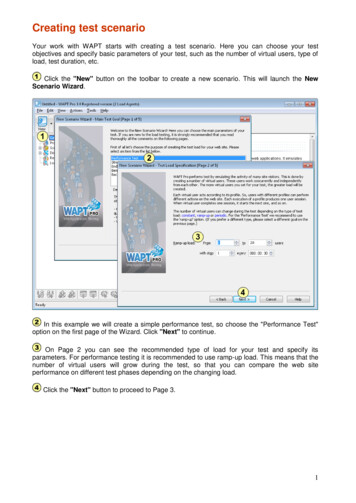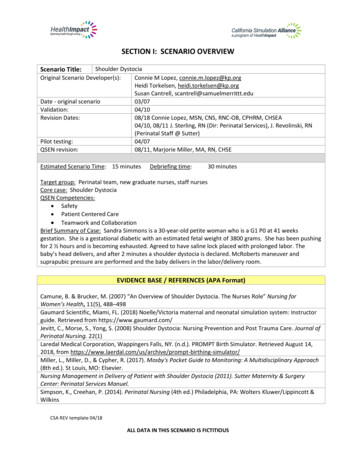
Transcription
SECTION I: SCENARIO OVERVIEWScenario Title:Shoulder DystociaOriginal Scenario Developer(s):Connie M Lopez, connie.m.lopez@kp.orgHeidi Torkelsen, heidi.torkelsen@kp.orgSusan Cantrell, scantrell@samuelmerrittt.eduDate - original scenario03/07Validation:04/10Revision Dates:08/18 Connie Lopez, MSN, CNS, RNC-OB, CPHRM, CHSEA04/10, 08/11 J. Sterling, RN (Dir: Perinatal Services), J. Revolinski, RN(Perinatal Staff @ Sutter)Pilot testing:04/07QSEN revision:08/11, Marjorie Miller, MA, RN, CHSEEstimated Scenario Time: 15 minutesDebriefing time:30 minutesTarget group: Perinatal team, new graduate nurses, staff nursesCore case: Shoulder DystociaQSEN Competencies: Safety Patient Centered Care Teamwork and CollaborationBrief Summary of Case: Sandra Simmons is a 30-year-old petite woman who is a G1 P0 at 41 weeksgestation. She is a gestational diabetic with an estimated fetal weight of 3800 grams. She has been pushingfor 2 ½ hours and is becoming exhausted. Agreed to have saline lock placed with prolonged labor. Thebaby’s head delivers, and after 2 minutes a shoulder dystocia is declared. McRoberts maneuver andsuprapubic pressure are performed and the baby delivers in the labor/delivery room.EVIDENCE BASE / REFERENCES (APA Format)Camune, B. & Brucker, M. (2007) “An Overview of Shoulder Dystocia. The Nurses Role” Nursing forWomen’s Health, 11(5), 488–498Gaumard Scientific, Miami, FL. (2018) Noelle/Victoria maternal and neonatal simulation system: Instructorguide. Retrieved from https://www.gaumard.com/Jevitt, C., Morse, S., Yong, S. (2008) Shoulder Dystocia: Nursing Prevention and Post Trauma Care. Journal ofPerinatal Nursing. 22(1)Laredal Medical Corporation, Wappingers Falls, NY. (n.d.). PROMPT Birth Simulator. Retrieved August 14,2018, from -simulator/Miller, L., Miller, D., & Cypher, R. (2017). Mosby's Pocket Guide to Monitoring: A Multidisciplinary Approach(8th ed.). St Louis, MO: Elsevier.Nursing Management in Delivery of Patient with Shoulder Dystocia (2011). Sutter Maternity & SurgeryCenter: Perinatal Services Manuel.Simpson, K., Creehan, P. (2014). Perinatal Nursing (4th ed.) Philadelphia, PA: Wolters Kluwer/Lippincott &WilkinsCSA REV template 04/18ALL DATA IN THIS SCENARIO IS FICTITIOUS
SECTION II: CURRICULUM INTEGRATIONA. SCENARIO LEARNING OBJECTIVESLearning Outcomes1. Manages care of delivering woman using principles of safety.2. Recognizes significance of findings based on critical assessment data.3. Makes clinical decisions and calls for assistance based on accurate assessment of patient.Specific Learning Objectives1. Assesses laboring patient for normal vs. abnormal progress.2. Gathers relevant patient, environmental and contextual data to assess care priorities3. Recognizes & reports risk factors for shoulder dystocia.4. Recognizes complication of shoulder dystocia and calls for appropriate assistance.5. Prioritizes care and communicates effectively with inter-professional team members.6. Communicates situation & plan of care to patient and family.7. Performs Mc Roberts maneuver and supra pubic pressure.8. Assists in safe delivery of baby, performing APGAR, skin to skin.Critical Learner Actions1. Recognizes risk factors for complication of shoulder dystocia & prioritizes care.2. Notifies OB/Midwife/Pediatrician of risk factors.3. Recognizes complication of shoulder dystocia.4. Calls for assistance and communicates emergency with team.5. Initiates IV.6. Communicates time head delivered and shoulder dystocia.7. Performs McRoberts maneuver and suprapubic pressure accurately.8. Prepares for possible emergency delivery /surgical intervention (C-section).9. Communicates with patient/family with clear calm statements of action.B. PRE-SCENARIO LEARNER ACTIVITIESPrerequisite CompetenciesRequired prior to participating in the scenarioKnowledgeSkills/ Attitudes Assessment findings in shoulder dystocia Assessment of laboring mother Priorities in safe delivery of shoulder dystocia Fetal monitoring Assessment of fetal well being Significance of abnormal assessment findings Inter-professional team communication;structured communication tool (SBAR)National Patient Safety GoalsTherapeutic communication in acutesituations McRoberts Maneuver & supra-pubic pressureinterventionsRequest for assistance appropriate to situationPreparation of labor bed for shoulder dystociadeliveryPatient/family communicationCSA REV template 04/18ALL DATA IN THIS SCENARIO IS FICTITIOUS
SECTION III: SCENARIO SCRIPTA.Case summarySandra Simmons is a 30-year-old, petite woman who is a G1 P0 at 41 weeks gestation. She is a gestationaldiabetic with an estimated fetal weight of 3800 grams. She has been pushing for 2 ½ hours and is becomingexhausted. Agreed to have saline lock placed because of prolonged labor. The baby’s head delivers, and within30 seconds a shoulder dystocia is declared. McRoberts maneuver and suprapubic pressure are performed andthe baby delivers in the labor/delivery room.B. Key contextual detailsSetting: Labor and delivery room.Situation: Patient has been pushing for 2 ½ hours and is exhausted. Fetal heart tones have been within normalrange. As the baby crowns, the fetal heart rate decelerates to the 90’s with pushing. The FHR has moderatevariability and the FHR returns to baseline between pushes.Systems issues: The primary nurse for the patient is a novice nurse. The novice nurse has just received reporton this patient and is assisting the patient with pushing. The father of the baby is at the bedside.C. Scenario CastPatient/ ClientRoleNurse #1Charge Nurse #2MD or CNMPatientFather of babySister of motherHigh fidelity simulator or Hybrid (blended simulator) Mid-level simulatorBrief Descriptor Novice nurseExpert nurseStandardized Participant (SP)or Learner (L)LLLSPExhaustedInitial: Patient exhausted “I am so tired” I can’t pushanymore!”Trigger: Baby’s head out “This hurts! Please help me!”Fearful and anxiousSPInitial: When the mother expresses that she is exhausted“My wife is exhausted, isn’t there anything you can dofor her?”Trigger: When the head is delivered but not theshoulders, “Is my baby going to be okay?” “Why isn’t mybaby being delivered?”Sister: For hybrid (blended simulator), with hand underSPmanikin’s abdomen, hold baby to delay delivery ofshoulders. Push baby’s head out, then pull back (Turtle’ssign). After 2 minutes, release and allow baby to birthCSA REV template 04/18ALL DATA IN THIS SCENARIO IS FICTITIOUS
Last name:SimmonsGender: FeAge: 30Spiritual Practice: CatholicD.Patient/Client ProfileFirst name:Hit: 5’1”Wt.: 160Ethnicity: CaucasianSandraCode Status: FullPrimary Language spoken: English1. History of present illnessSandra Simmons is a 30-year-old, petite woman who is a G1 P0 at 41 weeks gestation. She is a dietcontrolled, gestational diabetic with an estimated fetal weight of 3800 grams. She has been pushingfor 2 ½ hours and is becoming exhausted. Agreed to have saline lock placed with prolonged labor.Primary Medical DiagnosisIntrauterine pregnancy @ 41 weeks2. Review of paticWNLGastrointestinalWNLEndocrineDiet controlled gestational LDevelopmental HxWNLPsychiatric HxWNLSocial HxFirst pregnancy. Married and living with husband.Alternative/ Complementary Medicine Hxunknown3. Current medicationsMedication allergies:Food/other allergies:DrugPNVColaceNone reportedNKDAReaction:Reaction:Dose1 tablet1 tabletRoutePOPOCSA REV template 04/18ALL DATA IN THIS SCENARIO IS FICTITIOUSFrequencyOnce a dayTwice a day
4. Laboratory, Diagnostic Study ResultsNa:K:Cl:HCO3:Ca:Hgb: 11.2PTAmmonia:ABG-pH:VDRL: NRCXR:CT:Other:Mg:Hct: 35PTTAmylase:paO2:GBS: negPhos:Plt: 150INRLipase:paCO2:Herpes: noneECG:MRI:Glucose: 90WBC: 10,000Troponin:Albumin:HCO3/BE:HIV: NRCr:HgA1C:ABO Blood Type:BNP:Lactate:SaO2:BUN:E. Baseline Simulator/Standardized Patient State(This may vary from the baseline data provided to learners)1. Initial physical appearanceGender: FeAttire: hospital maternity gownAlterations in appearance (moulage): red wig with pigtailsxxID band present,accurate informationAllergy band present,accurate informationID band present,inaccurate informationAllergy band present,inaccurate informationID band absent or notapplicableAllergy band absent or notapplicable2. Initial Vital Signs Monitor display in simulation action room:xNo monitorMonitor on, but no x Monitor on,displaydata displayedstandard displayBP: 138/80HR: 90FHR: 120 BL, moderate variability,CVP:PAS:AIRWAY:ETC02:Lungs: Left:Sounds/mechanicsHeart: Sounds:ECG rhythm:Other:Bowel sounds:RR: 18PAD:FHR:T 98.9SpO2: 94%FHR 90 with pushingPCWP:CO:Right:S1 S2Other:CSA REV template 04/18ALL DATA IN THIS SCENARIO IS FICTITIOUS
3. Initial Intravenous line set upx SalineSite:lock #1IV #1Site:Fluid type:MainPiggybackIV #2Site:Fluid type:MainPiggyback4. Initial Non-invasive monitors set upx NIBPECG First lead:xPulse oximeterTemp monitor/typeIV patent (Y/N)Initial rate:IV patent (Y/N)Initial rate:IV patent (Y/N)ECG Second lead:Other:5. Initial Hemodynamic monitors set upA-line Site:Catheter/tubing Patency (Y/N)CVP Site:PAC Site:6. Other monitors/devicesFoley catheterAmount:Appearance of urine: voiding clear urineEpidural catheterx Infusion pump:Pump settings: PrimaryPiggyback (2nd channel)x Fetal Heart rate monitor/tocometerInternalExternalEnvironment, Equipment, Essential propsRecommend standardized set ups for each commonly simulated environment1. Scenario setting: (example: patient room, home, ED, lobby)Perinatal Unit/ Labor & Delivery Room2. Equipment, supplies, monitors(In simulation action room or available in adjacent core storage rooms)x Foley catheter kitx Straight cath. kitx Bedpan/ UrinalFeeding pumpPressure bagx IV Infusion pumpNasogastric tubeDefibrillatorPCA infusion pumpxIV fluidType:LactatedRingersETT suctioncathetersCode CartEpidural infusionpumpIV fluid additives:Oral suction catheters12-lead ECGCentral line InsertionKit30 Units Pitocin in 500ml NSCSA REV template 04/18ALL DATA IN THIS SCENARIO IS FICTITIOUSIncentive spirometerWall suctionChest tube insertionkitChest tube equipDressing equipmentBlood productABO Type:# of units:
3. Respiratory therapy equipment/devicesxNasal cannulaFace tentBVM/Ambu bagNebulizer Tx kit4. Documentation and Order FormsxHealth Carex Med AdminProvider ordersRecordProgress Notesx Graphic recordxxxMedicationTransfer ordersreconciliationNurses’ NotesDx test reportsActual medical record binder, constructedper institutional guidelinesxxSimple Face MaskNon re-breather maskFlowmeters (extra supply)xH&PAnesthesia/PACUrecordStanding (protocol)ordersCode RecordOtherDescribe:5. Medications (to be available in sim action room)# MedicationDosageRoute#Pitocin30 UnitsIVPBFentanyl50 mcgIVxMedicationCSA REV template 04/18ALL DATA IN THIS SCENARIO IS FICTITIOUSLab ResultsED RecordICU flow sheetxPrenatal recordDosageRoute
CASE FLOW / TRIGGERS/ SCENARIO DEVELOPMENT STATESInitiation of Scenario: Sandra Simmons is a 30-year-old gestational diabetic who is a G1P0 at 41 weeks gestation. Patient has been pushingfor 2 ½ hours and is becoming exhausted. You must help the patient push. The baby is at 2 station.Patient is petite with an estimated fetal weight of 3800 Gm.MD is on her way.STATE / PATIENT STATUS1. BaselineDESIRED LEARNER ACTIONS & TRIGGERS TO MOVE TO NEXT STATEOperatorLearner ActionsPatient has been pushing for 90minutes. (vocalize as such)BP 136/80HR 90RR 24FHT’s 120, to 90 withpushing, moderate variabilityBP 136/80, HR 90, RR 24FHT’s 120, to 90 withpushing, moderate variabilityIV lock is in place.Patient continues to push butvocalizes Initial “I am so tired. I1.2.3.4.Triggers:5.To perform expected actionswithin 5 minutes6.can’t push anymore!”When the mother expressesthat she is exhausted “My wifeis exhausted, isn’t thereanything you can do for her?”7.8.Assists patient w/pushing.Assesses maternal and fetalwell-being.Recognizes risk factors forshoulder dystocia.Calls for assistanceNotifies MD/Midwife of risks forshoulder dystocia & of patient’sexhaustion. (SBAR).Communicates withpatient/family with clear, calmstatements.Requests step stool.O2 @ 10 L via mask.CSA REV template 04/18ALL DATA IN THIS SCENARIO IS FICTITIOUSDebriefing Points:1. Communication with patient andfamily.2. Identify maternal/fetal riskfactors for shoulder dystocia.3. Strategies for remaining calm inescalating situation.4. Strategies for effective teamworkcommunication.
STATE / PATIENT STATUS2.MD at bedside. 2 RN’s presentPatient exhaustedDESIRED ACTIONS & TRIGGERS TO MOVE TO NEXT STATEOperator:Learner Actions:Baby’s head is delivered.Sister: For hybrid (blendedsimulator), with hand undermanikin’s abdomen, hold babyto delay delivery of shoulders.Push baby’s head out, thenpull back (Turtle’s sign)ooNormal maternal VSFHT’s 110 baseline withdecelerations 90’s withpushing, moderatevariability1. Note time of head delivery.2. Attempts to suction baby.3. Notifies team of possibleshoulder dystocia.4. Directs team following safecommunication skills.5. Get step stool if not previouslydone.Triggers:Shoulders undelivered after30 secondsCSA REV template 04/18ALL DATA IN THIS SCENARIO IS FICTITIOUSDebriefing Points:1. Direct team communication.2. Teamwork and collaboration.3. Hazards of shoulder dystocia.
STATE / PATIENT STATUS3.DESIRED ACTIONS & TRIGGERS TO MOVE TO NEXT STATEOperator:Learner Actions:Baby’s head out “This hurts!Please help me!”Normal maternal vital sign,Patient/family follow directionsto stop pushing.When the head is delivered butnot the shoulders,“Is my baby going to be okay?”“Why isn’t my baby beingdelivered?”FHT’s 100 baseline withdecelerations 80’s withpushing, moderate variabilityTriggers:Shoulders deliveredSister allows descent of babyby loosening grasp on baby.MD directs team.1. RN calls time of shoulderdystocia & calls time (every 15seconds) to Perinatal team.2. Calls for immediate help/anesthesia and pediatircian3. RN Directs patient/family tostop pushing.4. MD Performs McRobertsmaneuver.5. MD directs RN to performsuprapubic pressure (Stand onstool and use rocking motion).6. Communicates throughout withpatient/family.7. Initiates IV if not already done.CSA REV template 04/18ALL DATA IN THIS SCENARIO IS FICTITIOUSDebriefing Points:1. Optimal maternal position forpushing with shoulder dystocia(lateral or knee chest).2. Maneuvers to relieve theshoulder dystocia.3. Factors for documentation4. MD communicationa. Feedback loopb. Call outsc. Prepare to open ORd. Notify pediatrician
STATE / PATIENT STATUS4.DESIRED ACTIONS & TRIGGERS TO MOVE TO NEXT STATEOperator:Learner Actions:Vocalizations of mother &father appropriate to situation.Baby delivers vaginallyVery concerned about baby notcrying loudly at first.APGAR 4-7-9Poor toneLethargicNo vigorous cry1. Performs APGAR accurately2. Reports findings to team3. Communicates withpatient/family (periodicupdates)Debriefing Points1. Importance of skin to skin assoon as possible.2. APGAR’s3. Family support“What are you doing with mybaby over there? Is he alright?” Triggers:APGAR 9 @ 10 minutesScenario End Point: Baby to mother skin to skinSuggestions to decrease complexity:Suggestions to increase complexity: No response to interventions, requires crash C-Section. Patient and family become more anxious andsignificantly distracting.CSA REV template 04/18ALL DATA IN THIS SCENARIO IS FICTITIOUS
APPENDIX A: HEALTH CARE PROVIDER ORDERSPatient Name:Diagnosis:DOB:Age:MR#: No Known Allergies Allergies & SensitivitiesDateTimeSignatureCSA REV template 04/18HEALTH CARE PROVIDER ORDERS AND SIGNATURE
APPENDIX B: Digital images of manikin and/or scenario milieuInsert digital photo hereInsertdigitaldigitalphotophotohereof initialInsertscenario set up hereInsert digital photo hereInsert digital photo hereCSA REV template 04/18
APPENDIX C: DEBRIEFING GUIDEGeneral Debriefing PlanWith VideoIndividualGroupDebriefing GuideDebriefing MaterialsObjectivesDebriefing PointsWithout VideoQSENQSEN Competencies to consider for debriefing scenariosPatient Centered CareTeamwork/CollaborationEvidence-based PracticeSafetyQuality ImprovementInformaticsSample Questions for Debriefing1. How did the experience of caring for this patient feel for you and the team?2. Did you have the knowledge and skills to meet the learning objectives of the scenario?3. What GAPS did you identify in your own knowledge base and/or preparation for thesimulation experience?4. What RELEVANT information was missing from the scenario that impacted yourperformance? How did you attempt to fill in the GAP?5. How would you handle the scenario differently if you could?6. In what ways did you feel the need to check ACCURACY of the data you were given?7. In what ways did you perform well?8. What communication strategies did you use to validate ACCURACY of your information ordecisions with your team members?9. What three factors were most SIGNIFICANT that you will transfer to the clinical setting?10. At what points in the scenario were your nursing actions specifically directed towardPREVENTION of a negative outcome?11. Discuss actual experiences with diverse patient populations.12. Discuss roles and responsibilities during a crisis.13. Discuss how current nursing practice continues to evolve considering new evidence.14. Consider potential safety risks and how to avoid them.15. Discuss the nurses’ role in design, implementation, and evaluation of informationtechnologies to support patient care.Notes for future sessions:CSA REV template 04/18
3. Recognizes & reports risk factors for shoulder dystocia. 4. Recognizes complication of shoulder dystocia and calls for appropriate assistance. 5. Prioritizes care and communicates effectively with inter-professional team members. 6. Communicates situation & plan of care to patient and family. 7. Performs Mc Roberts maneuver and supra pubic .
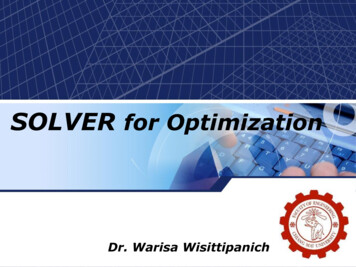

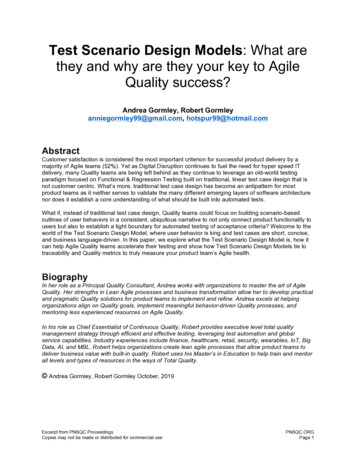
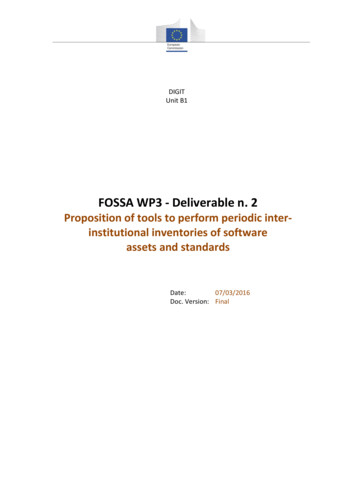

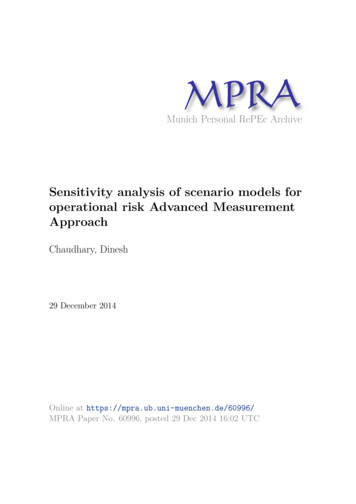

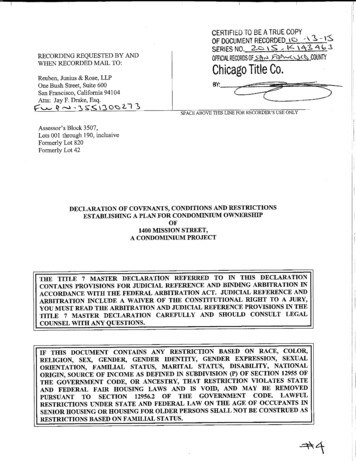

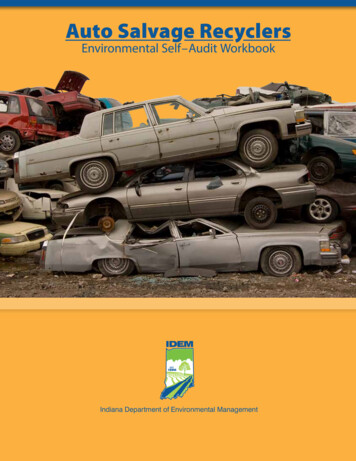
![Informatica Interview Questions and Answers [Scenario-Based]](/img/2/informatica-interview-questions-and-answers-scenario-based-1.jpg)
